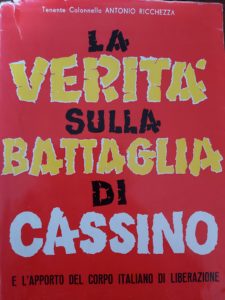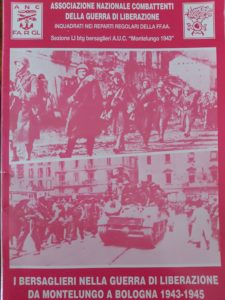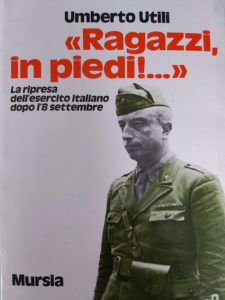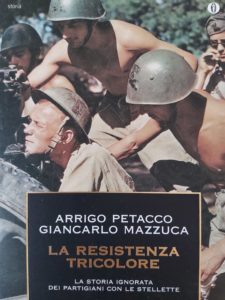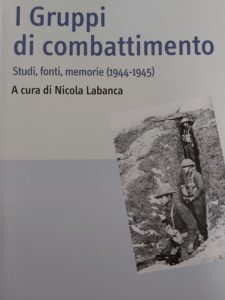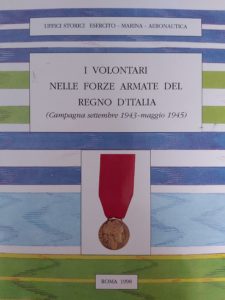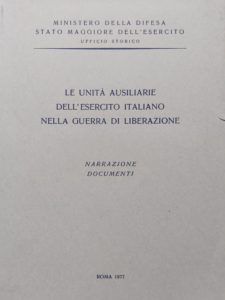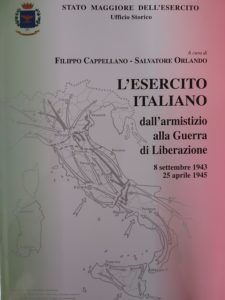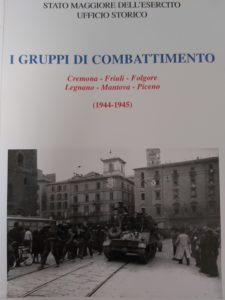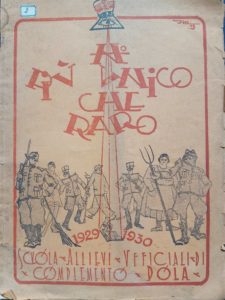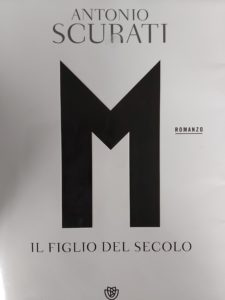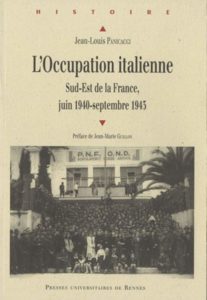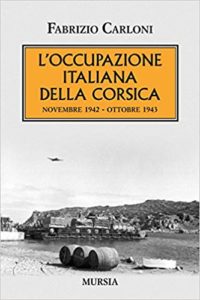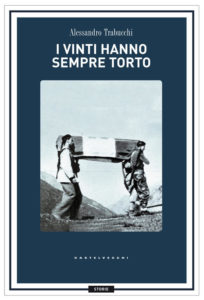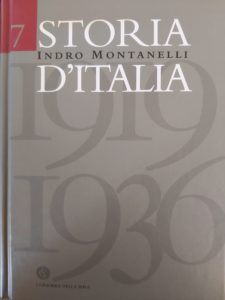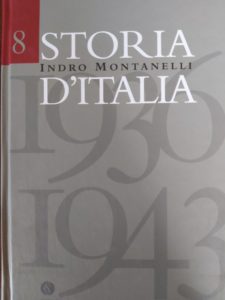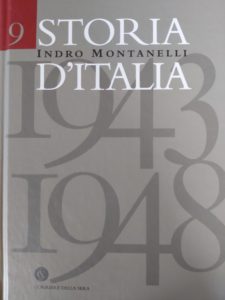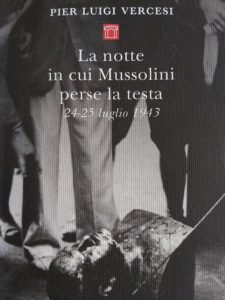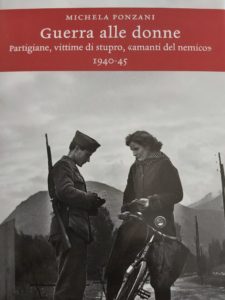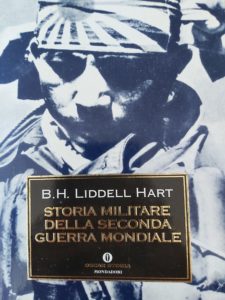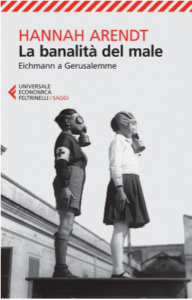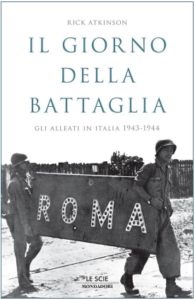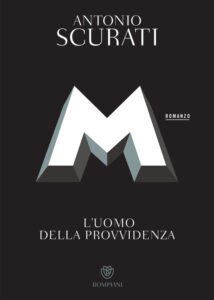Here’s the books I’ve read to reconstruct my grandpa’s war experience. They are listed in no particular order and they are almost all in Italian, so I hope you speak the language 🙂
– Ricchezza Antonio. La verità sulla battaglia di Cassino. Fratelli Pozzo Editori. 1958.
The book is a bit dated and it sounds rather bombastic at times. However, it is a very useful source of information, as it was written by a veteran of the Italian campaign. Furthermore, it includes lots of interesting pictures and maps, as well as a complete list of all the Italians who fought the Germans alongside the Allies. My grandpa, Adolfo Pavani, is mentioned there.
– Associazione Nazionale Combattenti della Guerra di Liberazione. I bersaglieri nella guerra di liberazione da Montelungo a Bologna 1943 – 1945. Edizioni Eda. 1995.
This is a rather dry book, that mostly reads like a mere list of events. However, it focuses specifically on the role played by the bersaglieri in the Italian campaign. As such, it is an invaluable source of information to better understand my grandpa’s experience. His name, Adolfo Pavani, is explicitly mentioned in this book too.
– Utili Umberto. Ragazzi, in piedi! La ripresa dell’esercito italiano dopo l’8 settembre. Mursia Editore. 1979.
This is a really interesting and informative book: the diary of the man who led the Italian army in its fight against the Germans. It’s rich in anecdotes and crucial to understand the Italian campaign through the eyes of one of its main protagonists.
– Petacco Arrigo, Mazzuca Giancarlo. La resistenza tricolore. Mondadori. 2010.
This book tries to cover all episodes of resistance by regular Italian soldiers. As such, it is rather brief in their description. Still, it is a useful source, as it provides precious information on how Italian units deployed in Corsica contributed to the liberation of the island (my grandpa was stationed there before joining the Allies in the Italian campaign).
– Edited by Labanca Nicola. I gruppi di combattimento. Studi, fonti, memorie (1944 – 1945). Carocci. 2006.
This book is a collection of the documentation presented at a 2005 conference on the role of Italian soldiers in fighting the Germans. It is a really valuable tool for anyone interested in accessing primary sources on the Italian campaign, as it lists the precise location, in the army archive, of many historical documents. I hope one day I’ll have the opportunity to read them for myself. Other than that, its most interesting bit is the detailed description of the relationship between Italian and French troops in Italy. Which was not ideal, to say the least.
– Edited by Aterrano Marco Maria. La ricostituzione del Regio esercito dalla resa alla liberazione 1943 – 1945. Rodorigo Editore. 2018.
This book includes several articles covering the role of Italian units in the fight against the Germans. Some of them were very relevant to my research, in particular those concerning the resistance of Italian soldiers in Corsica, the cooperation of regular units with partisans and the reorganisation of the Italian army in its fight alongside the Allies. Furthermore, the book provides a precise estimations of the casualties suffered by Italian units during the Italian campaign.
– Istituto Storico del Volontarismo Italiano di Guerra. I volontari nelle forze armate del regno d’Italia (campagna settembre 1943 – maggio 1945). Uffici storici esercito – marina – aeronautica. 1998.
More than a narration of events, this book is a list of primary sources and documents concerning the attempt of many Italians to join the Allies as volunteers during the Italian campaign. It is therefore a useful collection for anyone interested in the topic, although it makes for a very dry reading. Some interesting facts I learnt going through the documentation listed in the book: many Italian citizens living abroad tried to move back to Italy to join the army; authorities were keen in accepting anyone who was at least 17 years old and fit for service; several Italians living under German occupation tried to cross the front line in order to fight with the Allies; French authorities didn’t always facilitate the enrolment of volunteers in the Italian army, but rather encouraged able men to join their Foreign Legion.
– Ministero della Difesa, Stato Maggiore dell’Esercito. Le unità ausiliarie dell’esercito italiano nella guerra di liberazione. Ufficio Storico. 1977.
This book focuses entirely on Italian auxiliary units, i.e. those not serving on the front line but transporting equipment, repairing infrastructures and guarding sensitive targets in areas already liberated by the Allies. As such, it is not immediately relevant to my grandpa’s war experience. Nevertheless, it was impressive to see that they gathered so many Italians. The number of men enlisted in auxiliary units ranged from almost 60.000 in October 1943 to over 196.000 in April 1945.
– Ministero della Difesa, Stato Maggiore dell’Esercito. L’esercito italiano dall’armistizio alla Guerra di Liberazione. Ufficio Storico. 2005.
This is mostly a photographic book. Consequently, it is not very rich in terms of historical details but it is a formidable collection of pictures of Italian soldiers fighting alongside the Allies.
– Ministero della Difesa, Stato Maggiore dell’Esercito. I gruppi di combattimento (Cremona – Friuli – Folgore – Legnano – Mantova – Piceno). Ufficio Storico. 1973 (new edition published in 2010).
This books is a very detailed account of the activities of the Italian “Combat Groups”, created as from September 1944 in order to integrate the Allies’ armies in Italy. It contains interesting details on the resistance of Italian soldiers in Corsica, as well as on the liberation of several villages around my home town (Ariano nel Polesine, Adria, Cavarzere and Chioggia), which took place from 24 to 29 April 1945 and involved Combat Group Cremona.
– Scuola allievi ufficiali di complemento Pola. Piu’ unico che raro. Fratelli Niccolini Editore. 1930.
I bought this book thinking that it would describe the Pola military school that my grandpa attended. Instead, this is a booklet written by the students who attended the school in 1929. As such, it is a precious historical document that opens a window into the mind and life of the people who lived in that period. It is also full of bombastic fascist rhetoric. Which sounds rather funny today, really, if it didn’t lead to so much destruction back then.
– Scurati Antonio. M – Il figlio del secolo. Bompiani. 2018.
Extraordinary novel narrating the beginning of fascism in Italy and recipient of the prestigious “Strega” literary prize in 2019. Excellent book to better understand the spirit and events of that time. I highly recommend it.
– Panicacci Jean-Louis. L’occupation italienne. Sud-est de la France, juin 1940 – septembre 1943. PU Rennes. 2010.
Superb book on the Italian occupation of France and invaluable source of information on the role played by Italian soldiers in Corsica, where my grandpa was stationed at the beginning of his war experience. A book I read with quite some anxiety, considering that it concerns the behaviour of Italian soldiers as an occupation force.
– Carloni Fabrizio. L’occupazione italiana della Corsica. Novembre 1942 – Ottobre 1943. Ugo Mursia Editore. 2016.
Excellent source of information on the Italian occupation of Corsica. It includes first-hand accounts of veterans as well as a list of the Italian and German soldiers killed on the island during those months.
– Trabucchi Alessandro. I vinti hanno sempre torto. Castelvecchi Editore. 2014. Originally published in 1947.
Interesting overview of the partisan movement in the Italian region of Piemonte. Local partisans were led by Alessandro Trabucchi, a General of the Italian army who had previously served as 4th Army chief-of-staff. In that role, he had been in charge of supervising the Italian occupation of France.
– Montanelli Indro and Cervi Mario. Storia d’Italia 1919 – 1936, 1936 – 1943 and 1943 – 1948. RCS Libri SpA. 2003 and 2004. Originally published in 1976, 1979, 1980, 1982, 1983 and 1985 by Rizzoli.
Very informative and easy-to-ready history books covering the whole period of fascist Italy and the second world war. They were very useful to collect information on the historical context in which my grandpa grew up and fought.
– Vercesi Pier Luigi. La notte in cui Mussolini perse la testa. 24 – 25 luglio 1943. Neri Pozza Editore. 2019.
Interesting and detailed account of the events leading to the fall of the fascist regime in Italy. Fascinating reading, which provides a great insight of the political manoeuvres that ended up sealing Mussolini’s fate.
– Cavallaro Livio. Cassino. Le battaglie per la linea Gustav. 12 gennaio – 18 maggio 1944. Gruppo Ugo Mursia Editore. 2004.
Very detailed account of the battles around Cassino. It was useful in terms of understanding how the toughest battle of the Italian campaign developed.
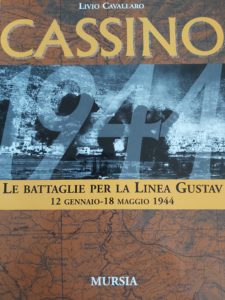
– Ponzani Michela. Guerra alle donne. Partigianie, vittime di stupro, “amanti del nemico” 1940 – 1945. Giulio Einaudi Editore. 2012.
Uncomfortable but insightful account of the violence that women had to endure during the war years. Most of the stories told in this book have been long ignored by official historiography and politics. It helped me in better understanding what women and civilian populations went through in those times.
– Liddell Hart Basil H. Storia militare della seconda guerra mondiale. Arnoldo Mondadori Editore. 1996. Originally published in 1970.
Superb overview of the entire second world war. A great book to navigate the most complex conflict that mankind ever faced.
– Arendt Hanna. La banalità del male. Feltrinelli Editore. 2012. Originally published in 1964.
Unmissable book on the holocaust, which explains also how Jews were treated in Italy.
– Atkinson Rick. Il giorno della battaglia: gli Alleati in Italia 1943 – 1944. Feltrinelli Editore. 2015.
This book is a masterpiece. By far the best book on the Italian campaign I’ve come across. Rich in first hand accounts of the fighting.
– Scurati Antonio. M – L’uomo della provvidenza. Bompiani. 2020.
Another fantastic novel by Scurati talking about Mussolini in power, his policies and what Italy became in the ’20s.
– Davies Norman. Vanished kingdoms. The history of half-forgotten Europe. Penguin Books. 2012.
Very useful book to get a better understanding of the end of the Italian royal family, the Savoia.
